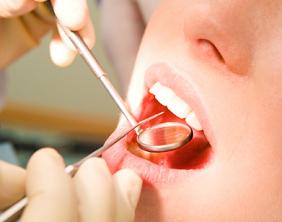Sodium Affects Your Smile
Posted on 2/20/2023 by Evan |
 There's something about salty, savory snacks and meals that keeps us coming back for more, whether it's chips, pretzels, pizza, or pasta. Nonetheless, these foods frequently get a bad reputation. Most doctors would advise you to cut back on indulging in these types of foods for better health. It has a lot to do with how much sodium you consume! Excess salt in the diet can lead to several health issues, including high blood pressure, stroke and, heart disease. But did you know it can also have a negative impact on your oral health? There's something about salty, savory snacks and meals that keeps us coming back for more, whether it's chips, pretzels, pizza, or pasta. Nonetheless, these foods frequently get a bad reputation. Most doctors would advise you to cut back on indulging in these types of foods for better health. It has a lot to do with how much sodium you consume! Excess salt in the diet can lead to several health issues, including high blood pressure, stroke and, heart disease. But did you know it can also have a negative impact on your oral health?
How Sodium Affects Your Health
Americans consume far too much sodium, the majority of which comes from packaged and processed foods. You'll also find sodium in unexpected places, such as pre-made sauces and canned vegetables. high sodium intake can have long-term negative effects on your overall health and oral health. Simple carbohydrates, also known as simple sugars, are high in salt. Bacteria in our mouths feed primarily on sugars and produce acid as a byproduct of their digestion. Our teeth' enamel can be harmed by acid. Plaque bacteria enter your mouth via damaged enamel, causing decay and cavities. When the enamel of the tooth is damaged, the inner layer of the tooth is exposed, which can cause teeth to yellow over time. Sodium increases urine output every time you use the restroom, resulting in an excessive loss of calcium and potassium. Calcium is responsible for the structure and strength of teeth and bones. Salty diets can dry out the mouth and create an unhealthy oral environment. Dry mouth not only contributes to bad breath, but it can also lead to unhealthy gums and, in extreme cases, chronic and advanced gum disease.
Reducing Sodium Intake
You can lower your blood pressure and improve your overall and oral health by eating fewer salty foods. Here are some suggestions for lowering your sodium intake and mitigating its negative effects. In the grocery store, look for the nutrition facts label to find out how much sodium is in each serving and how many servings are in each container. Cooking at home more frequently allows you to control the amount of salt in your meals. By draining and rinsing canned vegetables, you can cut sodium by up to 40%. Choose steamed, baked, poached, or roasted items when dining out. In addition, ask your server if your dish can be prepared without added salt.
|
|